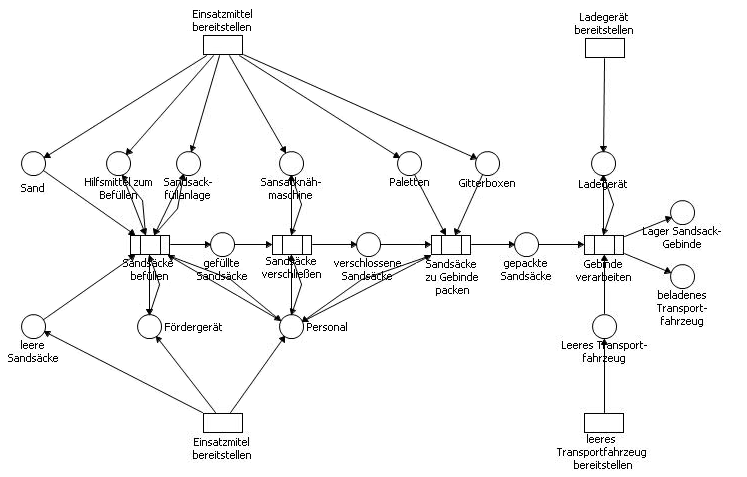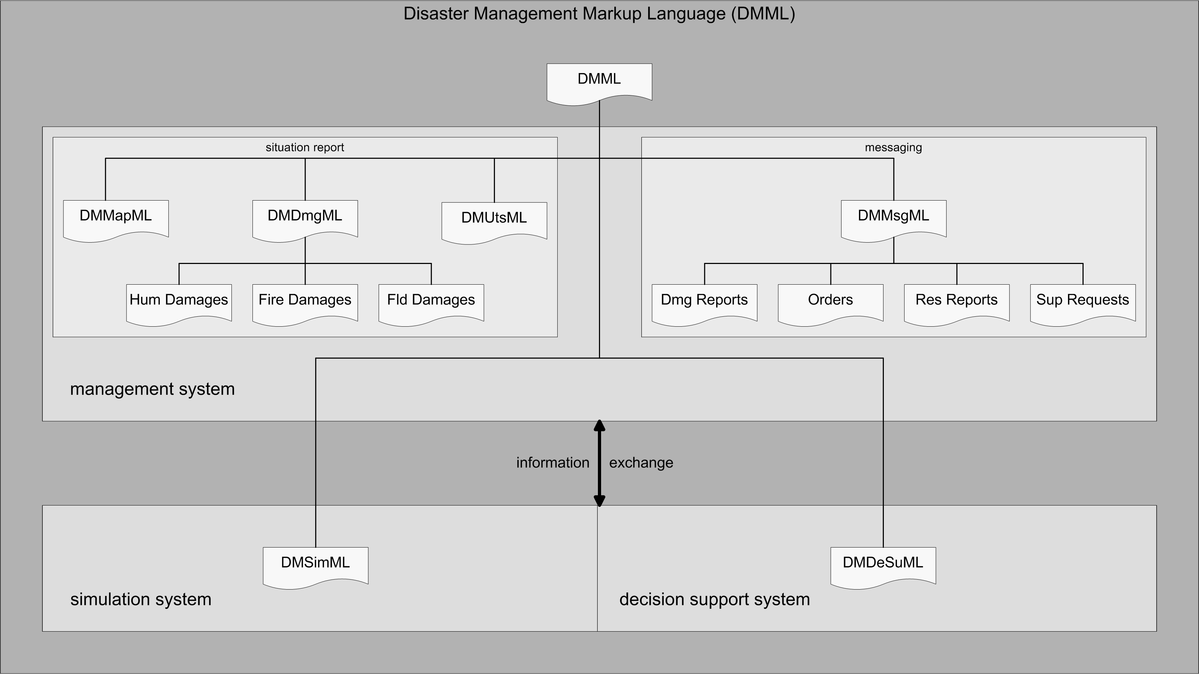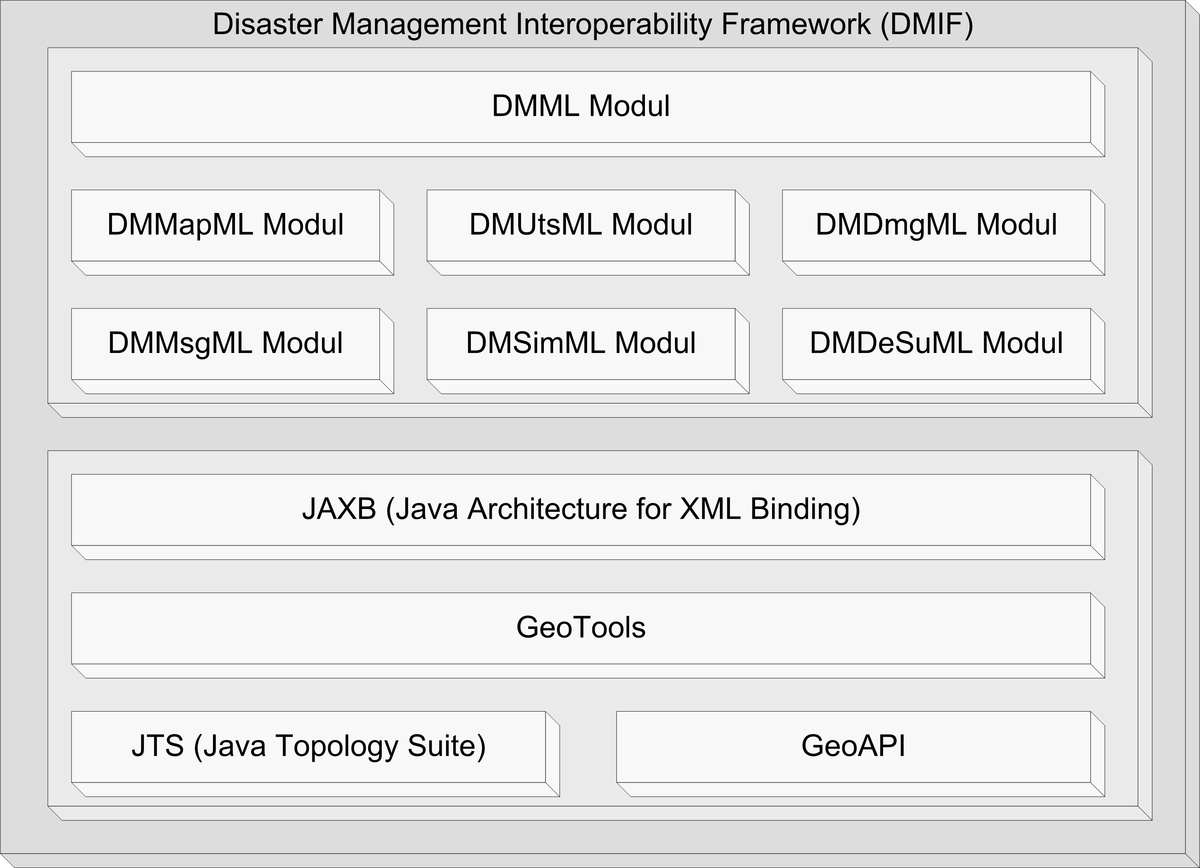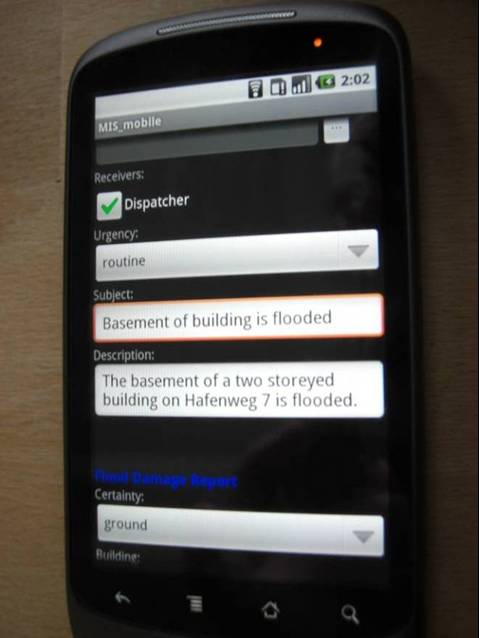Model based management of resources for flood water scenarios and interoperability of the components involved
- Contact:
Summary
Within the scope of the research project a model for the spatial and temporal mapping of response resources, including an approach for its optimisation is to be created. A multi-agent system (MAS) with a web service interface serves as a starting point for the system architecture. Based on this a specialised interoperability architecture for flexible communication and cooperation of spatial and temporal-dynamic information services and processing services is developed. Furthermore it has to be evaluated to what extend this architecture is capable to provide a better decision support before, during and after extreme events.
System architecture
The system consists of four interacting components. The first is a user interface, whose appearance is configured depending on the current user. Web service interfaces are provided to interchange data with both the decision support and the simulation component.
The simulation component simulates the disaster scenario of a floodwater by describing the dynamic handling process of the disaster in various scenarios. Performed user actions interact with the simulated scenario. The simulation component consists of various independent and distributed simulations based on the High Level Architecture (HLA).
The decision support component supports the user’s decision process by suggesting possible actions to optimize the dispatch of resources, based on unsure and incomplete information about the disaster scenario. To model this decision component a multi agent system was chosen, which allows for a realistic mapping of both the communication process and the decision process within the executive staff. The software agents implement the Belief-Desire-Intention (BDI) paradigm while forming an MAS according to the FIPA Agent Management Specification (FIPA AMS). An adequate web service interface is used for the information interchange between the decision support, the simulation and the user interface.
The fourth and last component is a central database in which the previously known information about the operation area and changes during the disaster is stored. For this decision support and simulation interact with the database as well as the user interface that can be used to access and store data. This database can contain e.g. information on the available resources as well as details about stationary institutions like hospitals and resources depots. Furthermore the database allows for the storage of information collected during a real disaster operation, which serves as a source for the improvement of the simulation and decision support component of the system.




